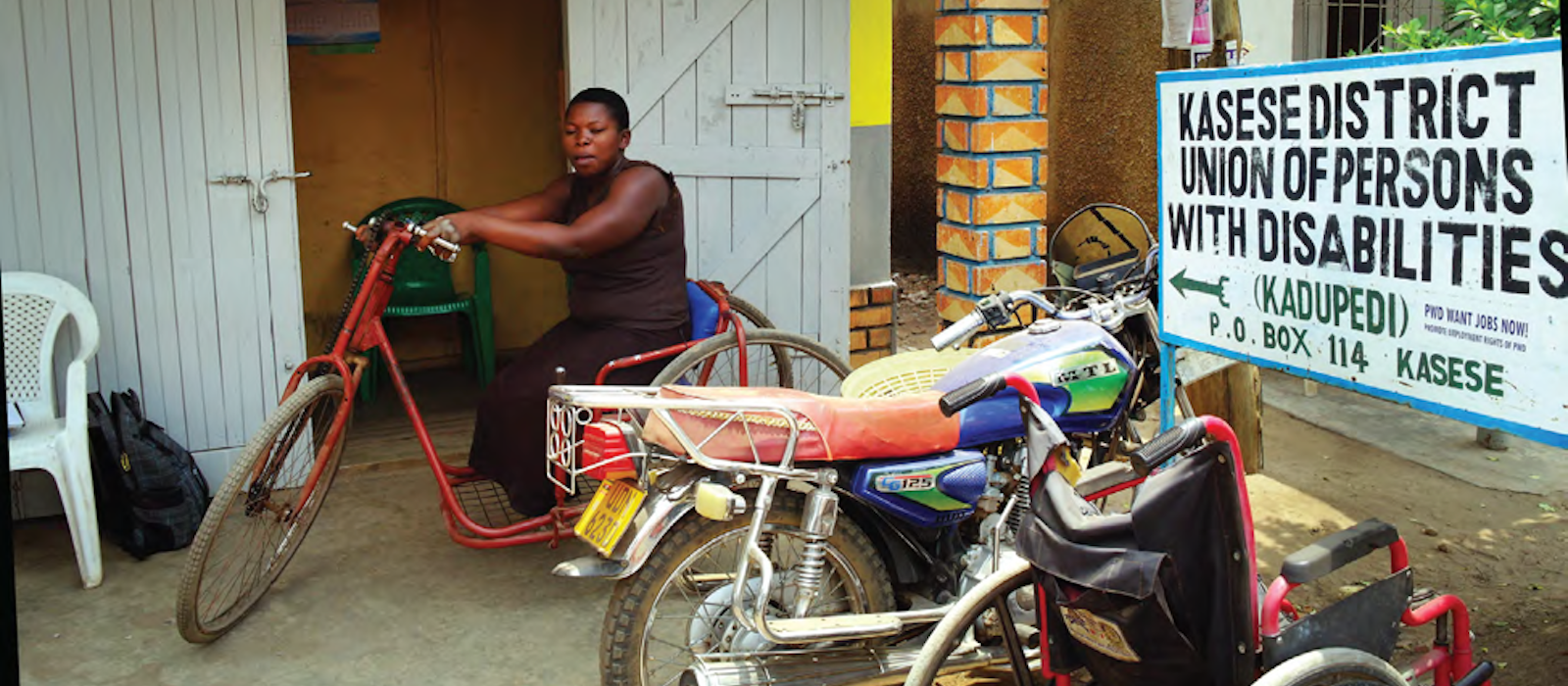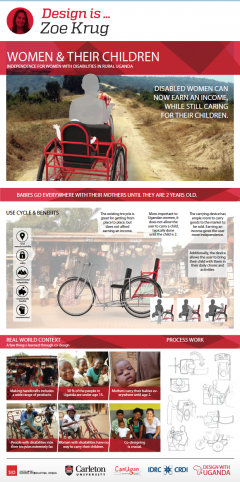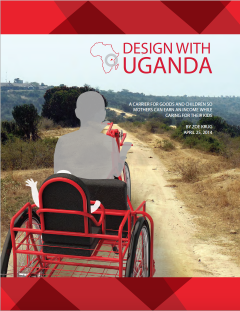Zoe Krug had not intended on designing for mothers with disabilities when she began this project. Rather, she wanted to develop an economic opportunity for people with disabilities to sell handicrafts, by fitting a tricycle with a workspace and storage design. When she arrived in Uganda, women with disabilities liked her concept, but were concerned that as mothers, there was no way for them to bring their young children with them. Zoe found that mothers with young children and babies in rural Uganda typically carry their children wherever they go until the children are about two years old.
Realizing that a basic need was missing from accessibility design for the region, Zoe shifted her focus to develop a tricycle that would allow mothers with disabilities to care for their children in the same way able-bodied mothers did. Zoe embarked on designing a tricycle that had storage space so that users could carry goods to market, but also incorporated a carrying device for young children, meaning that mothers with disabilities with young children could have an opportunity for economic empowerment without sacrificing proximity to their children in the early years.


